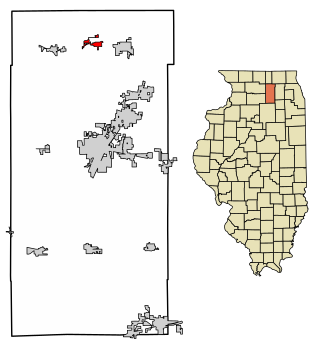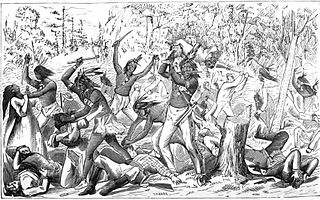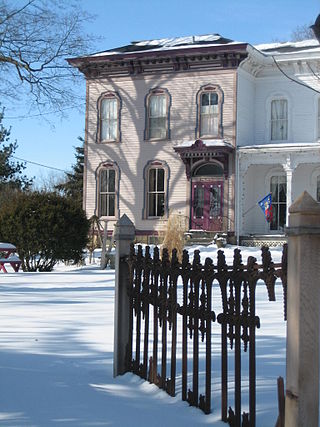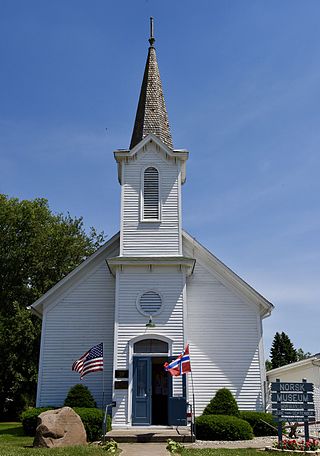Related Research Articles

Ogle County is a county in the northern part of the U.S. state of Illinois. According to the 2020 United States Census, it had a population of 51,788. Its county seat is Oregon, and its largest city is Rochelle. Ogle County comprises Rochelle, IL Micropolitan Statistical Area, which is also included in the Rockford-Freeport-Rochelle, IL Combined Statistical Area.

LaSalle County is a county located within the Fox Valley and Illinois River Valley regions of the U.S. state of Illinois. As of the 2020 Census, it had a population of 109,658. Its county seat and largest city is Ottawa. LaSalle County is part of the Ottawa, IL Micropolitan Statistical Area of Northern Illinois.

DeKalb County is a county located in the U.S. state of Illinois. As of the 2020 United States census, the population was 100,420. Its county seat is Sycamore. DeKalb County is part of the Chicago–Naperville–Elgin, IL–IN–WI Metropolitan Statistical Area.

Calhoun County is a county in the U.S. state of Illinois. As of the 2020 census, the population was 4,437, making it Illinois’ third-least populous county. Its county seat and biggest community is Hardin, with a population of 801. Its smallest incorporated community is Hamburg, with a population of 99. Calhoun County is at the tip of the peninsula formed by the courses of the Mississippi and Illinois rivers above their confluence and is almost completely surrounded by water. Calhoun County is sparsely populated; it has just five municipalities, all of them villages.

Boone County is a county located in the U.S. state of Illinois. As of the 2020 census, the population was 53,448. Its county seat is Belvidere. Boone County is included in the Rockford, IL Metropolitan Statistical Area.

Genoa is a city in the north-east corner of DeKalb County, Illinois, United States. It is located on the historic Galena-Chicago stagecoach route. At the 2020 census the city had a population of 5,298, up from 5,193 in 2010.

Kingston is a village in DeKalb County, Illinois, United States. The population was 1,108 at the 2020 census, down from 1,164 at the 2010 census.

Somonauk is a village in DeKalb and LaSalle Counties in the U.S. state of Illinois. The population was 1,786 at the 2020 Census, down from 1,893 at the 2010 Census.

Sycamore is a city in DeKalb County, Illinois, United States. It has a commercial district based and centered on Illinois Route 64. The population was 18,577 at the 2020 census, up from 17,419 at the 2010 census. Sycamore is the county seat of DeKalb County and was named after the sycamore tree.

The Town of Roxbury is located in Dane County, Wisconsin, United States. The population was 1,871 at the 2020 census. The unincorporated communities of Alden Corners and Roxbury are located in the town. The unincorporated community of Lutheran Hill is also located partially in the town.
Fairdale is an unincorporated community located in Franklin Township, in the northwestern corner of DeKalb County, Illinois, United States. It is located on the Iowa, Chicago and Eastern Railroad and on Illinois Route 72, approximately 4.8 miles (7.7 km) east of Exit 111 on Interstate 39.

The Indian Creek Massacre occurred on May 21, 1832 with the attack by a party of Native Americans on a group of United States settlers in LaSalle County, Illinois following a dispute about a settler-constructed dam that prevented fish from reaching a nearby Potawatomi village. The incident coincided with the Black Hawk War, but it was not a direct action of the Sauk leader Black Hawk and conflict with the United States. The removal of the dam was asked, was rejected by the settlers and between 40 and 80 Potawatomis and three Sauks attacked and killed fifteen settlers, including women and children. Two young women kidnapped by the Indians were ransomed and released unharmed about two weeks later.

The George H. Gurler House or simply, the Gurler House, is a home in DeKalb, Illinois. The home is listed on the National Register of Historic Places to which it was added in 1979. The home was built in 1857 and was occupied by members of George H. Gurler's extended family as early as 1888. Gurler was the co-founder of the Gurler Brothers Creamery. Gurler was also the president of the DeKalb County Farmer's Institute, the predecessor of the American Farm Bureau Federation.

The DeKalb County Courthouse is located in the county seat of DeKalb County, Illinois, U.S., the city of Sycamore. The Classical Revival structure sits on a square facing Illinois Route 64 as it passes through the city. The current courthouse was constructed in 1905 amid controversy over where the courthouse and thus, ultimately, the county seat would be located. The current building is the third structure to bear the name "DeKalb County Courthouse." DeKalb County's Courthouse still serves as the county's primary judicial center and is a contributing property to the Sycamore Historic District. The district joined the National Register of Historic Places in 1978. As the county's primary courthouse for over 100 years, the site has been host to many trials, including prominent murder cases.

The houses in the Sycamore Historic District, in Sycamore, Illinois, United States, cross a variety of architectural styles and span from the 1830s to the early 20th century. There are 187 contributing properties within the historic district, 75% of the districts buildings. Many of the homes are associated with early Sycamore residents, usually prominent business leaders or politicians. Houses within the district are known by, either their street address or by a name associated with a prominent owner or builder. For most of the houses, the latter is true.

Buffalo Grove is an unincorporated community in the Ogle County township of Buffalo, Illinois, United States. It was the first settlement in Ogle County, and was once a bustling frontier town that attracted many of Ogle County's early residents. The creation of the Illinois Central Railroad, caused most of the residents and businesses to move to Polo. Today this former hub of business comprises a few dozen homes.

Norway is an unincorporated community in Mission Township, LaSalle County, Illinois. Located along the Fox River, the community was the site of an early Norwegian-American settlement. Today it is the site of the State of Illinois Norwegian Settlers Memorial.
Webster is an unincorporated community in Fountain Green Township, Hancock County, Illinois, United States. It was originally known as Ramus and was settled under the direction of Joel H. Johnson.
Indian Creek, also known as Big Indian Creek, is a 51.5-mile-long (82.9 km) tributary of the Fox River in Lee, LaSalle, and DeKalb counties in Illinois.
Waubeka is an unincorporated census-designated place in the Town of Fredonia, Ozaukee County, Wisconsin, United States. Located on the Milwaukee River, the community is part of the Milwaukee metropolitan area. As of the 2010 census, its population is 657.
References
- ↑ Boies, Henry L. "History of Genoa, Il." The History of De Kalb County, Illinois. Retrieved 19 February 2007
- ↑ "Genoa's Culture." Archived 2007-03-02 at the Wayback Machine Retrieved 19 February 2007
- ↑ Larson, Sheila R. "History of some DeKalb County towns." Retrieved 19 February 2007